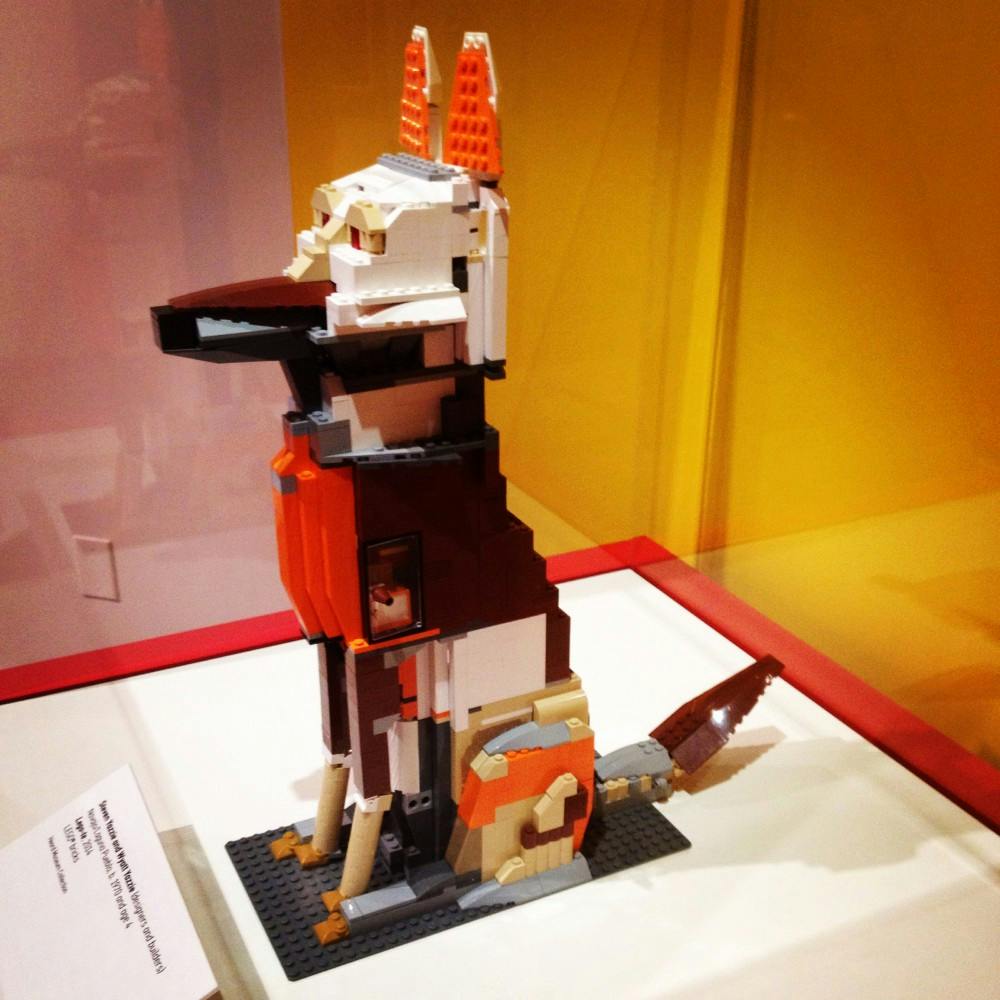If there's one thing I've learned about art, it's that there's always a new way of looking at things. This can mean a shift in perspective, a newfound symbolic meaning or even altering mediums.
The Heard Museum currently displays the "BUILD! Toy Brick Art at the Heard" exhibition. This unique show features works that do just this: alter their medium to gain a new perspective.
Visitors to the Heard scavenger hunt their way through snaking exhibits highlighting Native American tribes across the western United States until they finally reach the colorful LEGO-land. The small room, awash in primary colors, boasts a small variety of artworks juxtaposed with several opportunities to play with the tiny building blocks.
The iconic toy is a staple for many children and children-at-heart, which makes it a prime tool for Native artists to create a dialogue about Native culture.
Navajo artist Jaclyn Roessel is quoted on a plaque introducing the exhibit: "American Indian cultures are not static. We do not exist in a vacuum. We are exposed to and gain inspiration from a myriad of sources, including things as iconic as LEGO bricks." Roessel's statement goes on to say that such relatable art can help kids see the "universality of other cultures."
The exhibit attempts to address the contemporary nature of Native art, but the message is overshadowed by its intense focus on interactivity.
While small projects such as building cars to race down a track are definitely the main draw for kids, they also offer families the chance to build and create together. This gives the exhibit a nice parallel, as many featured artists had help from their loved ones in creating their artworks.
Possibly the most notable piece in the exhibit is "LEGO-te." This moveable sculpture of a coyote came alive through the hands of
 "Lego-te" by Steven and Wyatt Yazzie.
"Lego-te" by Steven and Wyatt Yazzie.Navajo/Laguna-Pueblo artist and ASU student Steven Yazzie. The image of the coyote is prominent across Yazzie's paintings for its complicated image as a "mischievous instigator." For "LEGO-te," Yazzie's son Wyatt helped in its construction, insisting on providing the animal with a heart, stomach and food to eat.
Visitors also find textile pieces recreated in larger, LEGO forms, which add another element of texture to that found on the original pieces. An "Action Comics" comic book cover became a life-size construction project for artist Mark Mancuso and his daughter Mia.
While the exhibit is a bit confusing in layout and overwhelming in design, it still preserves the childhood days we remember — when we were fueled by imagination and creativity as we built our very own LEGO world.
"BUILD! Toy Brick Art at the Heard" is on display through Sept. 28.
What have you built with LEGOs? Tell me about your creations at mamccrea@asu.edu or via Twitter @mmccreary6.






